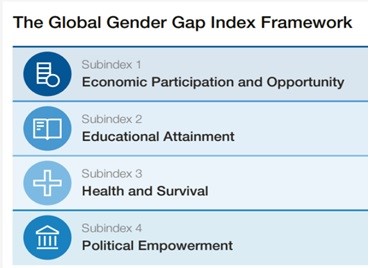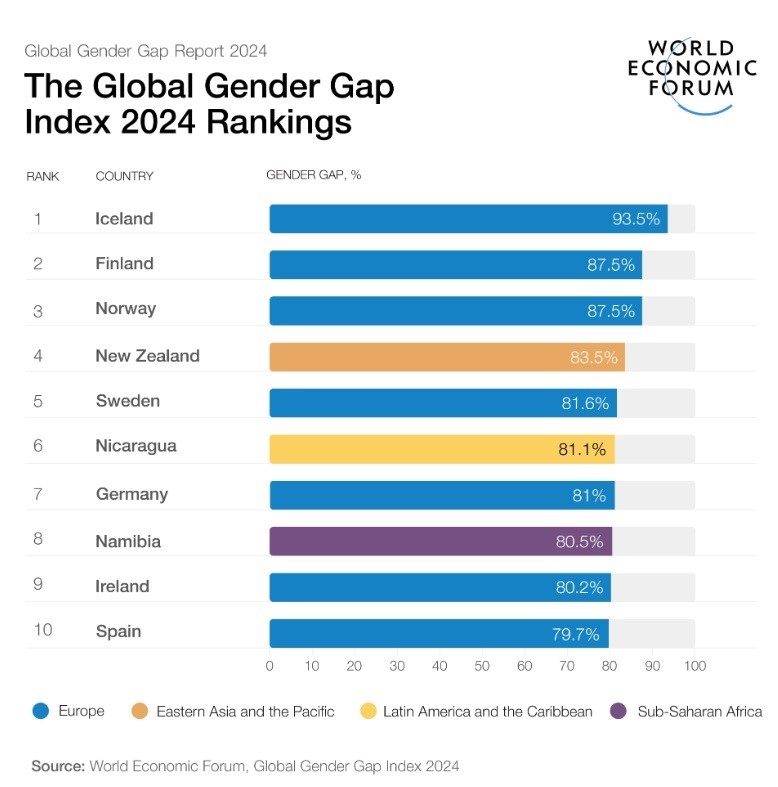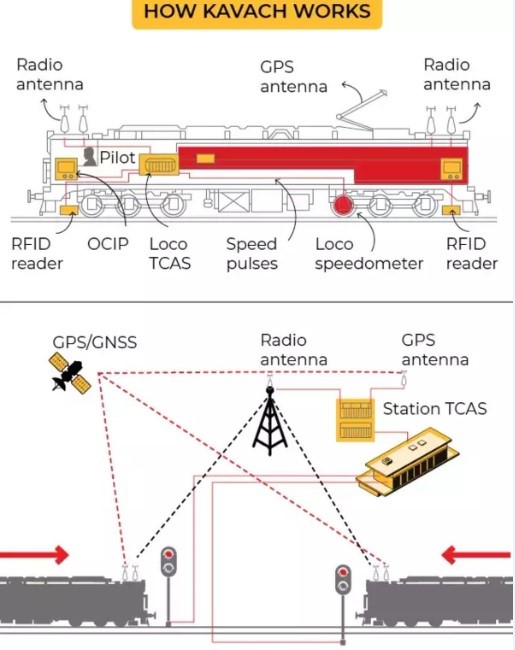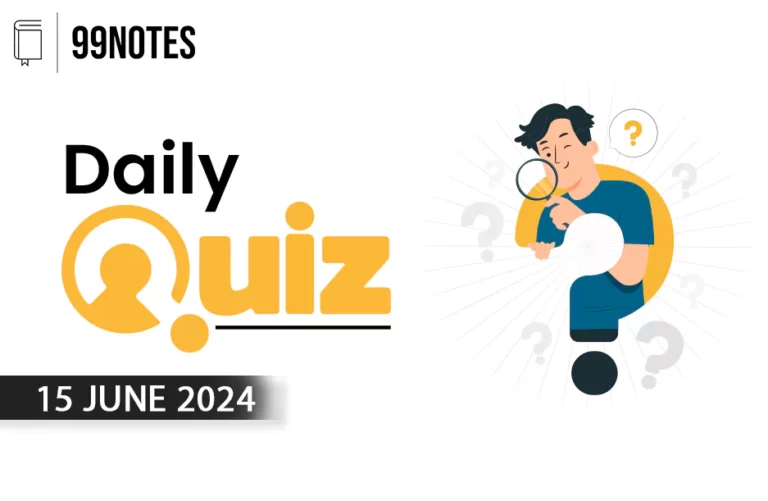20 June 2024 : Indian Express Editorial Analysis
1. Costs of inequality
(Source: Indian Express; Section: The Editorial Page; Page: 10)
| Topic: GS2 – Social Justice – |
| Context: |
|
Structure of the Global Gender Gap Index:

- The Global Gender Gap Index, first introduced in 2006, is a composite measure designed to capture the magnitude of gender-based disparities across four key dimensions: economic participation and opportunity, educational attainment, health and survival, and political empowerment.
- Each of these sub-indices is comprised of multiple indicators that collectively provide a summary of the gender gap in various domains.
- The index ranges from 0 to 1, with 1 representing complete gender parity.
- It is important to note that the index focuses on gender gaps, measuring women’s relative position to men rather than their absolute status.
- This approach allows for tracking changes in gender gaps over time and across different countries.
Limitations and Value of the Index:
- While the Global Gender Gap Index is a useful tool for highlighting key gender equality statistics that can be reliably measured and tracked, it does not encompass all aspects of gender equality.
- As such, it should not be seen as a comprehensive assessment but rather as an indicator of progress in closing gender gaps in specific areas.
- The index and its sub-indices provide insights into how much of the gender gap has been closed in various domains.
Detailed Performance in Sub-Indices:
Health and Survival
- India’s score on the “Health and Survival” sub-index is 0.951, indicating that 95.1% of the gender gap in this area has been closed.
- Despite this high score, India ranks 142nd out of 146 countries in health, suggesting that many other countries have performed better.
Educational Attainment
- In educational attainment, India has closed 96.4% of the gender gap, yet it is ranked 112th globally.
- This indicates that while progress has been made, other nations have advanced further in ensuring gender parity in education.
Economic Participation
- The economic participation sub-index includes gender gaps in labor force participation, managerial positions, wage gaps, and wage parity. India scores 39.8% on this sub-index, placing it at 142nd among 146 countries.
- Although there has been an improvement from 32.6% in 2021, the score remains low in absolute terms and is lower than the 2012 score of 46%.
- Countries with similar low levels of economic parity include Bangladesh, Sudan, Iran, Pakistan, and Morocco, all of which show less than 50% gender parity in labor force participation and estimated earned income.
Political Empowerment
- India’s score on political participation is 25.1%, placing it 65th globally. This sub-index reflects the slower global progress towards gender equality in political participation compared to other areas.
- India’s position has declined from 51st in 2021, when it had a score of 27.6%, indicating a worsening trend in political empowerment for women over the past two years.
- The score was higher in 2014 at 43.3%, showing a decline over the last decade.
Regional Comparison:
- South Asia as a region ranks 7th out of eight global regions, only above the Middle East and North Africa (MENA).
- Within South Asia, India is ranked fifth out of seven countries, with Bangladesh leading the region at the 99th position globally.
- This highlights that India is part of a region that generally ranks low on gender parity and performs poorly compared to several of its immediate neighbors.
Broader Implications and the Way Forward:
- Despite some improvements in specific dimensions for Indian women, the report underscores the persistence of gender gaps in key indicators.
- Historically, India’s gender gaps were narrower a decade ago, indicating a need for renewed focus on gender equality.
- There is extensive research documenting the economic costs of sidelining women.
- For example, the OECD estimates that gender-based discrimination in social institutions could cost the global economy up to $12 trillion. Reducing gender discrimination can boost GDP growth rates.
- Therefore, integrating gender equality into economic policymaking is crucial, treating it as a core concern rather than an afterthought.
Societal Change and Economic Equality:
- Achieving equality in the economic sphere requires society to view women as independent, intelligent, and capable adults, free to make individual choices and included as equals in all decision-making processes.
- This societal shift is essential for realizing true gender parity in the economy and beyond.

| Indian Initiatives to Reduce Gender Gap in Social, Economic and Political Life |
|
|
PYQ: Which of the following gives ‘Global Gender Gap Index’ ranking to the countries of the world? (2017) (a) World Economic Forum (b) UN Human Rights Council (c) UN Women (d) World Health Organization Ans: (a) |
| Practice Question: India’s position in the Global Gender Gap Index 2024 reflects persistent gender disparities across various dimensions. Critically analyze the factors contributing to India’s low ranking, with a specific focus on economic participation and political empowerment. Discuss the implications of these gender gaps on the country’s socio-economic development and suggest measures to improve gender parity in India. (250 words/15 m) |
2. Don’t wait for KAVACH
(Source: Indian Express; Section: The Ideas Page; Page: 11)
| Topic: GS3 – Disaster Management |
| Context: |
|

Statistical Overview and Safety Performance:
- Collisions are among the most severe types of accidents and almost always result in casualties.
- In the fiscal year 2022-23, the Indian Railways recorded six collisions, an increase from two in the previous year (2021-22). In 2023-24, four more collisions occurred.
- Despite an overall improvement in accident numbers over the years, maintaining safety is paramount. The only acceptable performance indicator for accidents in Indian Railways (IR) is zero incidents.
Efforts and Financial Investments:
- The reduced number of accidents indicates significant efforts by IR. However, the occurrence of collisions necessitates a focused approach to eliminate such incidents entirely.
- Historically, IR suffered from a lack of finances for safety-related works, including timely repairs, replacements, and maintenance.
- Now, with special funds like the Rashtriya Rail Sanraksha Kosh (RRSK) and the Rail Safety Fund, as well as capital grants, IR has dedicated resources for safety enhancements.
Capital Expenditure and Network Expansion:
- An unprecedented capital expenditure allocation of over Rs 2.5 lakh crore was made for 2023-24 and again for 2024-25.
- This funding supports network expansion to the farthest parts of the country, capacity augmentation of congested routes, and the commissioning of dedicated freight corridors.
- These developments are crucial for the railways’ historic scale and its transformative potential for social equity.
Speculative Reports and Enquiry:
- Following the Kanchenjunga Express collision, various speculative reports emerged in the media. An enquiry by the Commissioner of Railway Safety is underway.
- The preliminary cause cited is the loco pilot’s disregard for rule no. 9.01 of General and Subsidiary Rules, which mandates passing an automatic signal at a restricted speed of 15 kmph.
- The collision occurred in a newly converted automatic signalling section, allowing trains to follow each other at restricted speeds governed by signal aspects.
Anti-Collision Measures: KAVACH
- To address collision risks, the KAVACH anti-collision device is being deployed in a phased manner.
- Two major trunk routes, Delhi-Howrah and Delhi-Mumbai, are prioritized, with 10,000 route kilometers earmarked for coverage.
- However, its full implementation will take time, highlighting the need for immediate measures to prevent collisions.
About Kavach System:
- It is an indigenously developed Automatic Train Protection (ATP) system.
- Kavach was developed by the Research Design and Standards Organisation (RDSO) under Indian Railway (IR) in collaboration with Medha Servo Drives Pvt Ltd, HBL Power Systems Ltd and Kernex Microsystems.
- It is a set of electronic devices and Radio Frequency Identification devices installed in locomotives, in the signalling system as well the tracks, that talk to each other using ultra-high radio frequencies to control the brakes of trains and also alert drivers, all based on the logic programmed into them.
- Since 2016, the railways have been carrying out field tests for Kavach on passenger trains.
Applications:
- It has been designed to assist locomotive pilots in avoiding Signal Passing At Danger (SPAD) and overspeeding.
- The system can alert the loco pilot, take control of the brakes and bring the train to a halt automatically when it notices another train on the same line within a prescribed distance.
- The device also continuously relays the signals ahead to the locomotive, making it useful for loco pilots in low visibility.
- It also controls the speed of the train by an automatic application of brakes in case the loco pilot fails to do so.
- It helps the loco pilot in running the train during inclement weather conditions such as dense fog.
Immediate Safety Measures:
- The Railway Board needs to devise a plan involving low-cost equipment in locomotives to assist driving crews, strengthen preventive maintenance of signalling assets, and provide intensive training to staff.
- Each Signal Passed at Danger (SPAD) case should be treated as a major accident.
- Furthermore, the IR’s asset reliability requires attention, and successful examples of Automatic Train Protection Systems from the Mumbai suburban network should be emulated.
Funding and Internal Outcome Audits:
- Despite major accidents, IR claims one of the best safety records globally in terms of accidents per million train kilometers.
- Financing for safety-related work is robust, with appropriations from Gross Budget Support to RRSK and the Safety Fund exceeding Rs 50,000 crore in 2023-24.
- However, this investment necessitates internal outcome audits for impact assessment.
International Safety Comparisons:
- The International Railways safety performance data, published by the UIC (International Union of Railways), provides a benchmark.
- In 2022, significant rail accidents in 35 countries averaged 0.39 accidents per million train kilometers, compared to IR’s 0.03.
- This data includes various types of accidents, such as collisions, derailments, and incidents involving staff injuries and trespassing, offering a comprehensive view of safety practices.
Future Prospects and Focus:
- Indian Railways, the largest system under a government in terms of passenger traffic, is on track for unprecedented growth, despite financial challenges.
- With its network surpassing 100,000 running track kilometers and nearing full electrification, the focus must remain on preventing accidents involving loss of lives.
- Immediate action on collisions is essential, without waiting for the full deployment of KAVACH.
| Practice Question: Discuss the underlying causes of train collisions in India, highlighting the recent Kanchenjunga Express incident. Critically analyze the measures taken by Indian Railways to enhance safety and prevent such accidents. Evaluate the effectiveness of these measures and suggest additional steps that can be taken to ensure zero accident rates on Indian Railways. (250 words/15 m) |




